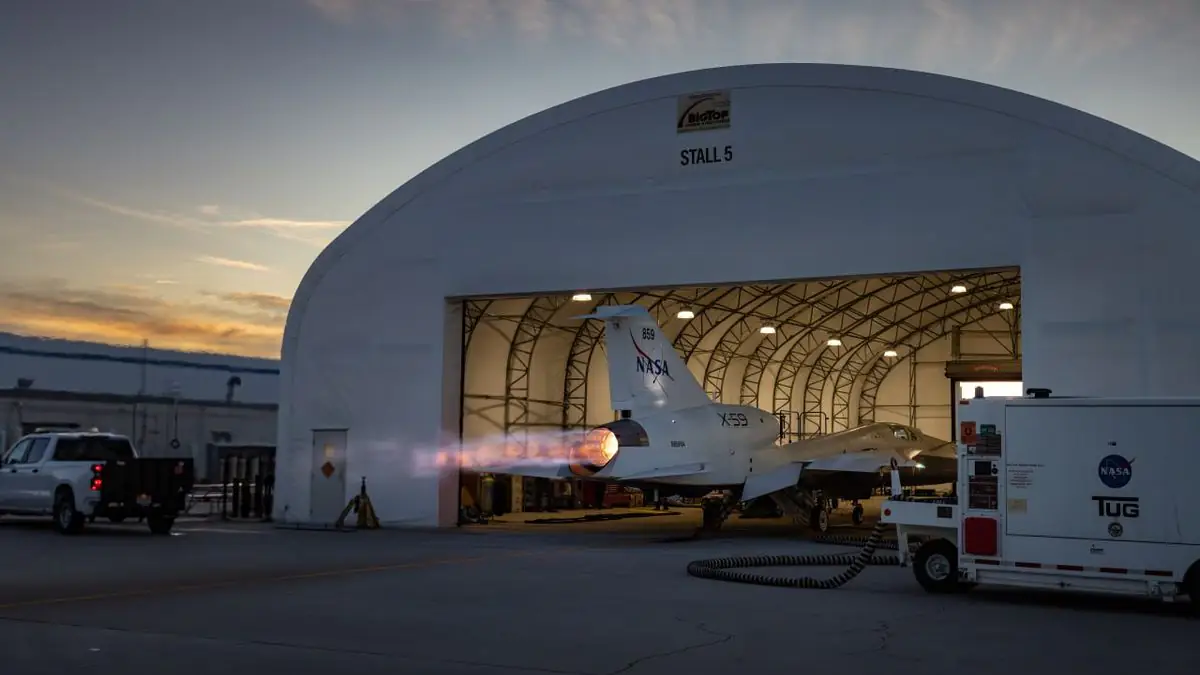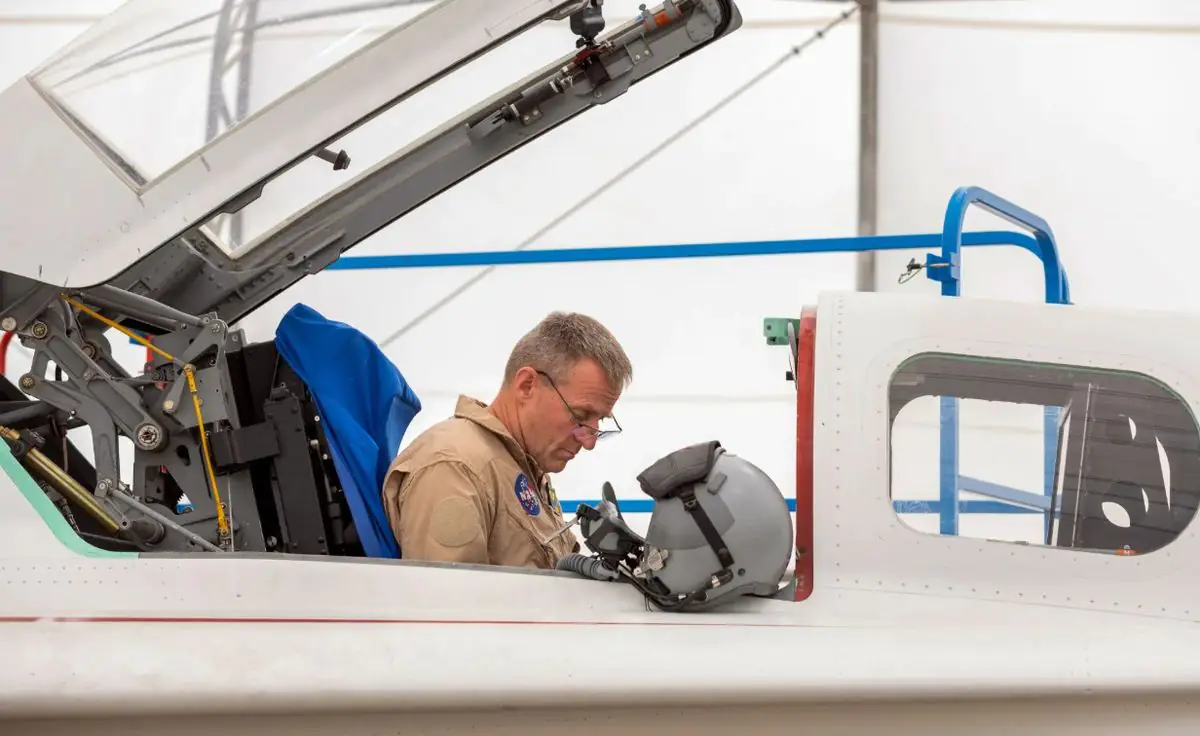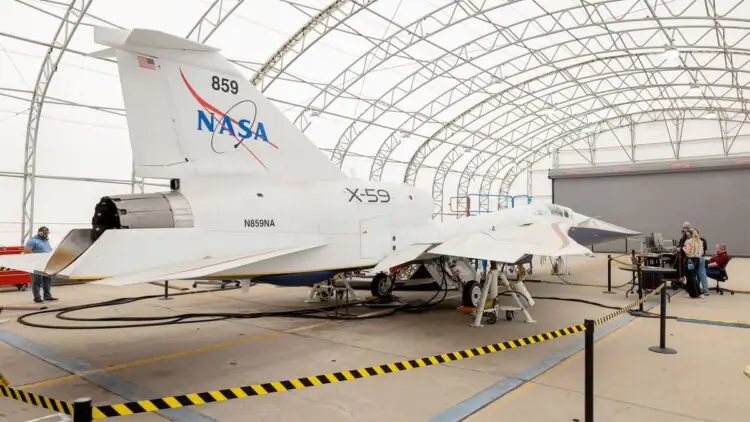NASA‘s quiet supersonic research aircraft, the X-59, has successfully completed a critical round of testing. According to the agency, the aircraft and all its onboard systems were tested for cruise-speed performance – all without ever taking off. These ground-based simulation tests allowed engineers to verify that both the hardware and software systems responsible for safe flight operation are functioning correctly and are capable of handling unexpected challenges.

The X-59 was developed by Lockheed Martin’s Skunk Works division as part of NASA’s Low-Boom Flight Demonstrator project. Its long, slender fuselage is designed to reduce the intensity of sonic booms that reach the ground when the aircraft breaks the sound barrier.
The cockpit, seat, and canopy are repurposed from a T-38 Talon trainer jet, while the landing gear comes from an F-16 fighter. The aircraft measures 30.4 meters in length with a wingspan of 9 meters. It’s powered by a General Electric F414 engine, capable of reaching a top speed of Mach 1.5 (approximately 1,590 km/h), with a planned cruising speed of Mach 1.42 (around 1,510 km/h) at an altitude of 16,800 meters.

Although during the simulation tests the aircraft “believed” it was flying high above the ground, in reality it remained parked at Lockheed Martin’s facility in Palmdale. “The idea behind these tests is to make the aircraft’s subsystems and onboard computer behave as if it’s in flight,” said the X-59’s lead avionics engineer.
Throughout the tests, engineers from NASA and Lockheed Martin activated most of the X-59’s systems, while keeping the engine off. The aircraft was connected to a ground-based computer that sent simulated signals – such as changes in altitude, speed, temperature, or system status – which the X-59 interpreted as real. “These were basic maneuvers, nothing too crazy,” the engineer added. “Then we started introducing system faults to see how it would react. Could the system compensate for the failure? Could the pilot recover?”
Every new aircraft is a combination of complex systems, and identifying the small adjustments needed to optimize performance is a crucial step in a disciplined flight-testing approach. “We expected to find a few things during the tests that would prompt us to go back and fine-tune for better performance, especially regarding some of the software – and that’s exactly what we ended up with. So these tests have been very valuable,” noted Johan Lin.
Source: space









